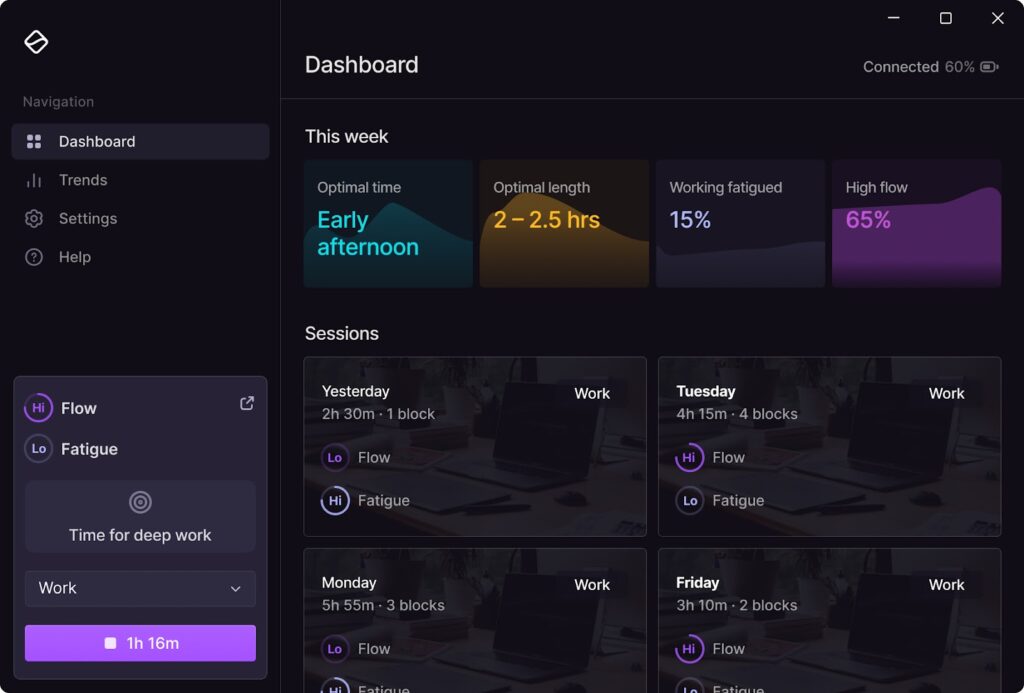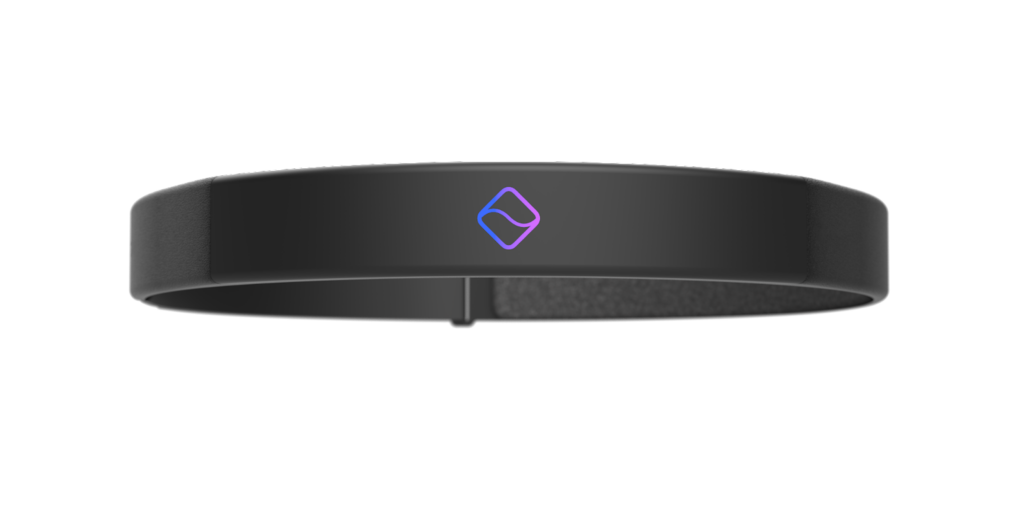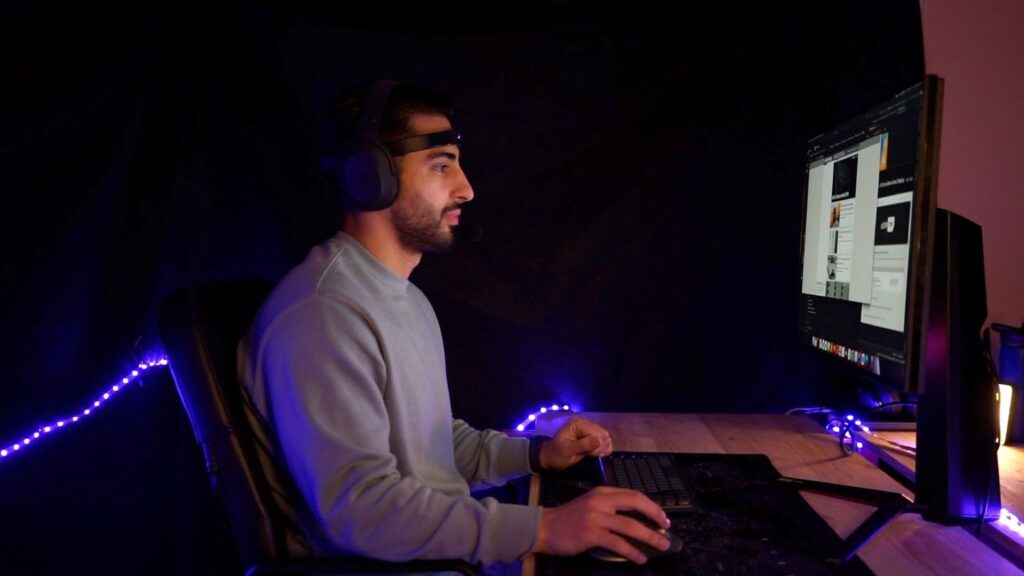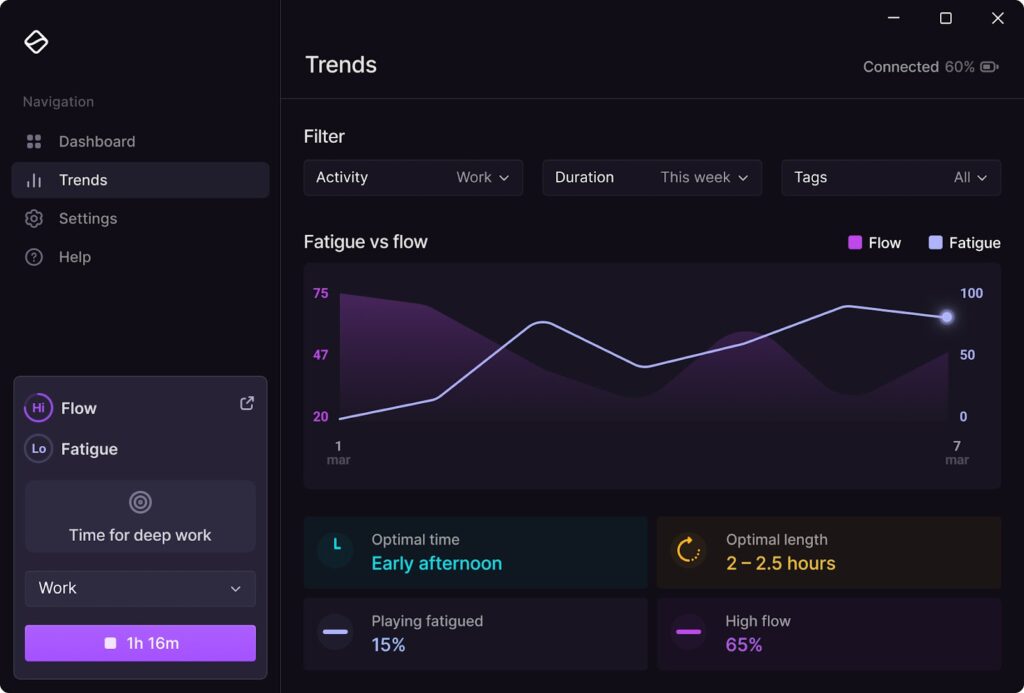Welcome to this edition of our Tools for Thought series, where we interview founders on a mission to help us think better and work smarter. Ben Wisbey is the co-founder of Pylot, the very first wearable to track your productivity, so you can know when you’re ready for deep work, shallow tasks, or need a break.
In this interview, we talked about the fallacy of time management, how to quantify work quality, the key questions to achieve deep work, the science of cognitive performance, how to manage mental fatigue, and much more. Enjoy the read!

Hi Ben, thanks for agreeing to this interview! Most people associate productivity with time management, but you think differently. Can you tell us more?
This is a great question. The age-old quest to optimize our time and make the most of our day often leads us to neglect a crucial factor: not all hours are created equal. In fact, an hour of deep, focused work can yield far better results than multiple hours of grinding through tasks when we’re not at our best.
After years of managing my time, I learnt that it was more important to manage my energy. If I could do my priority tasks when my mental energy was high, I was producing better work in less time.
As a performance scientist with a background in monitoring professional and Olympic athletes, I’ve always been passionate about helping people perform at their peak. This interest eventually merged with my obsession for productivity, and I embarked on an ambitious project to quantify energy management.
What started as a few months of work quickly turned into a two-and-a-half-year research journey, during which the Pylot team and I monitored brain wave activity and physiological responses during work and other mentally challenging tasks like video gaming.
Our research led us to quantify the mental aspects that impact performance. The most significant determinant of mental performance is flow. Flow, often referred to as “being in the zone,” is a state of relaxed concentration where you’re fully immersed in your work and not easily distracted. Scientifically speaking, this state is associated with specific brain wave frequencies.
Another critical factor we identified was mental fatigue. When mental fatigue is high, it’s difficult to maintain a flow state, and achieving another quality work block within the same day becomes highly unlikely.
While quantifying work quality is no easy task, our research demonstrated that serious gamers playing competitive online games had significantly higher win rates when they were in high flow states and managed to avoid fatigue.
So, the next time you find yourself striving for maximum productivity, remember that managing your energy and tapping into your flow state may just be the key to unlocking your true potential.
And this is what inspired you to build Pylot.
After the acquisition of my previous business, I found myself working remotely for a large organization. My mornings were filled with back-to-back meetings, and when I finally sat down to tackle my “real work” in the afternoons, I hit a wall. I couldn’t seem to get into the groove, and I wondered if I was just being lazy or if my endless meetings had left me mentally drained.
Even worse, I’d reach the end of each day feeling unsatisfied, questioning what I had truly accomplished.
As a self-proclaimed productivity nerd, I decided to dive deep into the data I had been tracking for years on RescueTime. While apps like Rize and RescueTime are fantastic at providing insights into computer activity and behavior, they couldn’t quite answer why I struggled to engage in deep work.
That’s when a few colleagues and I embarked on a mission to unravel this mystery by using sensors to measure what was actually going so, so we could answer three crucial questions:
- What time of day is best for my deep work?
- How long should these deep work sessions be?
- When do I need a break?
How does it work under the hood?
Pylot utilizes a lightweight and comfortable headband to gather EEG and HRV data. EEG tracks brain wave activity, while HRV measures variations in heart rate. By capturing this information, Pylot can assess mental fatigue and flow—two key elements of optimal cognitive performance.

The collected data is then sent to the Pylot app, available on Mac and Windows devices, where it offers real-time feedback along with recommendations for engaging in deep work, tackling shallow tasks, or taking a break.
As you continue to use the app, it learns about your unique patterns and can suggest the best times of day for your deep work sessions and their ideal duration.
Although the concept may sound straightforward, developing the algorithms that power this process took us three years. Behind the scenes, there’s a lot of heavy lifting happening on the data side to transform raw sensor information into valuable feedback.
They say hardware is hard. Building the first wearable for productivity must have come with many challenges—what were some of the design challenges you had to resolve?
Developing hardware is no easy feat, especially when it comes to creating devices that accurately collect scientific data.
Fortunately, our founding team brought invaluable experience from working on various wearable devices. We knew that our product had to be comfortable, lightweight, visually appealing, energy-efficient, and provide accurate data—a challenging combination to achieve.
As a pioneering wearable in its field, we faced our fair share of trial and error. Some of our early prototypes were uncomfortable to wear and not aesthetically pleasing. We also had to ensure compatibility with glasses and headsets.
After exploring multiple form factors and sensor placements, we’ve arrived at a design that is even better than we had hoped. The end product is incredibly lightweight and flexible to the point you forget you’re wearing it. Moreover, it delivers high-quality data, boasts a ten-hour battery life, and maintains compatibility with glasses and headsets.
We couldn’t be more thrilled with the final product and are eager to share it with the world.
This is such a thoughtful approach to hardware design. So, what does the user experience look like?
The terms “productivity wearable,” “EEG,” and “HRV” might seem complex and scientific, but we’ve made sure that our product is user-friendly and straightforward.
All you need to do is turn the band on and wear it. The apps will automatically record your work session and offer live feedback. There is an overlay, or widget, on Windows/Mac so you can see live feedback without interrupting your work.
The app then provides a summary of each work session, and each day, while also allowing you to see trends over time.
The experience of wearing the band is similar to using headphones. You might be aware of them for a few minutes after putting them on, but soon after, you’ll forget they’re even there.

What kind of people do you think would most benefit from using Pylot?
Pylot is designed for individuals seeking to maximize the quality of their workday. Rather than focusing on doing more work, it emphasizes doing one’s best work.
To accomplish this, users need some control over their work schedules, allowing them to adapt their work hours based on what suits them best. This flexibility may apply to remote workers or those with adjustable schedules, making it particularly relevant for founders, developers, designers, writers, and many other knowledge workers.
We’ve been testing Pylot with some of these users and encountered intriguing results. One memorable example involves a founder who used Pylot to adjust their daily routine based on the app’s recommendations.
During an unusually busy week, they pushed through a demanding day despite experiencing mental fatigue on Thursday. Come Friday, and their mental fatigue was high all day, making it difficult to perform at their best. However, they adapted their work plan according to Pylot’s feedback and shifted to a day focused on administrative and procedural tasks.
What about you, how do you use Pylot?
I use Pylot daily, being a productivity enthusiast myself. I was already aware that I worked best in the mornings, but Pylot has helped me refine my schedule further by identifying my optimal time for deep work as 7am to midday, working in 90-120 minute blocks. However, with these early starts comes a decline in the afternoon. My flow diminishes significantly after 2pm, so I focus on shallow tasks and try to schedule meetings and emails during this period.
Although this structure generally works well for me, not every day is identical. So, I monitor my fatigue levels to incorporate more breaks when necessary.
We have already begun examining the influence of sleep and exercise on cognitive performance. In the future, you might see a feature where the app integrates with data from devices like Apple Watch.
How do you recommend someone get started?
Right from the start, Pylot offers instant feedback on your flow and fatigue levels. However, its accuracy improves over time as it learns what’s normal for you.
We recommend using Pylot for two weeks to receive suggestions on your ideal deep work hours and session lengths.
By continuing to wear Pylot, you can monitor how these factors change over time and receive live recommendations on when to switch to shallow work or take a break. Since no two days are the same, this real-time feedback proves invaluable in adjusting your work schedule to achieve the best outcomes.
And finally… What’s next for Pylot?
Our mission is to help people design their day for success. We aim to assist users in making the most of their time by engaging in the right tasks at the right moments. This approach not only leads to improved work outcomes but also ensures there’s time for other important activities in life.
This principle applies not only to work but also to any activity where cognitive performance is crucial, including studying and even recreational activities like competitive video gaming.
As Pylot prepares for launch, we’re excited to help individuals maximize their potential, ultimately leading to a more fulfilled and satisfied life.
Post-launch, our focus will shift towards integration with devices like Apple Watch and other services.
Thank you so much for your time, Ben! Where can people learn more about Pylot?
You can learn more on our website and follow our progress on Instagram.

